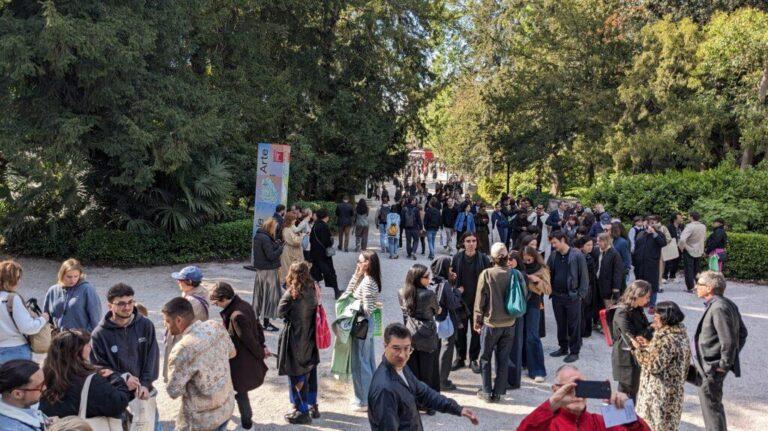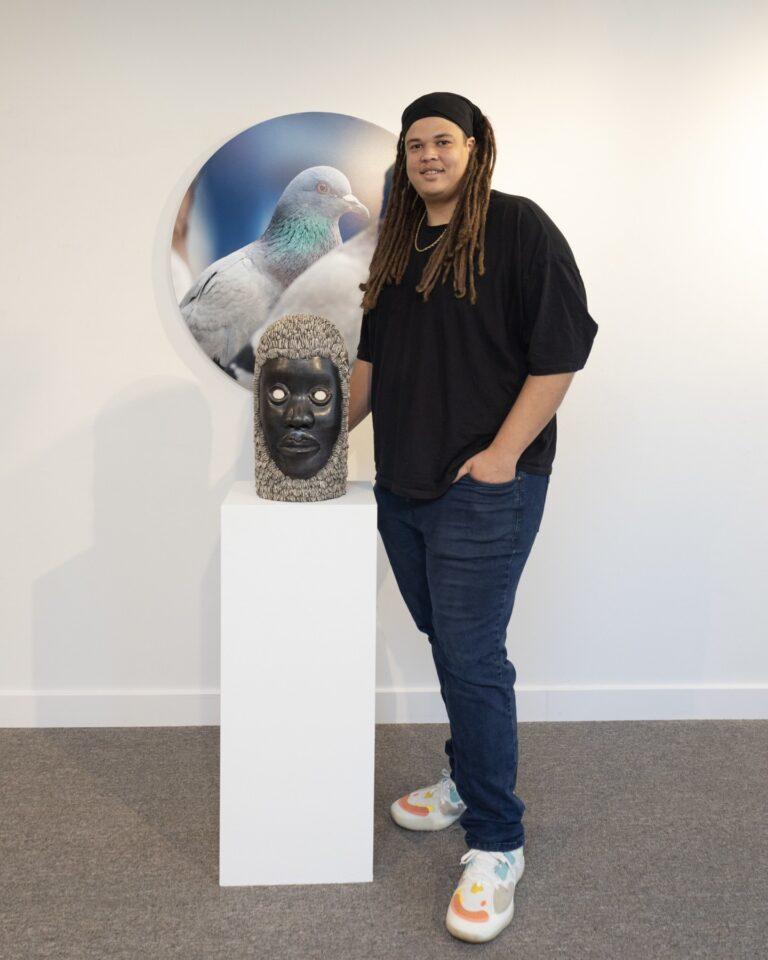It’s not that often that I leave an art exhibit with a new way of seeing the world, but that’s what happened after I visited the ICA’s dance/draw exhibit, last weekend.
As described in an ICA press release, the show, ” organized by ICA Chief Curator Helen Molesworth, traces the journey of the line from changes in drawing in the 1960s to its explosion off the page and into three-dimensional space—ultimately finding itself in the realm of dance. It features some 100 works—including video, photography, drawings and sculptural objects and live performances.”
Based on the ICA Website’s rather formal description ( “In both dance and drawing, the line, as an independent means of expression, was liberated from the historical ideal of perfect form, to become a mobile, open-ended element used to explore history, memory, and the expressive potential of the body”) I thought the show would dry and difficult–which is why I managed to avoid seeing it until just before the exhibit closes- on January 16. And am I sorry! Because what I found was a refreshing new way of experiencing both dance and drawing–as well as objects and movement in the real world–that I’d like to go back to again and again.
One section of the exhibit shows how artists used body parts and objects rather than traditional drawing implements to make art. For example, Janine Antoni used her eyelashes and mascara to make patterns on canvas; Trisha Brown’s superimposed tracings of her feet show motion in themselves; John Cage drew with plants and seaweed; David Hammons bounced a basketball covered with dirt onto a white background, and Mona Hatou, below, drew with her own hair dipped in hair dye. Photos and the works themselves document the artmaking processes–which often involved dance-like movement.  1.
1.
In another room, a section called “The Line in Space” includes works in which thread, string, or wire were used to form line–off of paper or canvas. Of this group, I especially liked the mesmorizing simplicity of Fred Sandback’s “Untitled Sculptural Study” hung in space.
If I recall correctly, a thread red acryllic yarn hung up and down from ceiling to floor to the left, blue from the wall to the red thread, and yellow parallel on the floor–forming a three-dimensional representation of a Mondrian-like grid.
I also got a new perspective on charcoal drawing when I encountered Cornelia Parker’s Hanging Fire (Suspected Arson) sculpture, which is part of the ICA’s permanent collection. Composed of chunks of charcoal hung from the ceiling on wire mesh, in this new context, the piece becomes a charcoal drawing– in space.
A third section, “Dancing,” explores challenges to traditional modern dance as dance performances were moved off the stage into the “real world” of streets, mountains, the subway and such. “Babette Mangolte’s photographs and films of Judson dancers Trisha Brown and Lucinda Childs show us the dancing body, in its entirety, rigorously defining itself as a line in space…. Juan Capistran’s break dancing in a museum (below) “similarly engages dance to defy protocols of normative behavior. “ 2.
2.
Finally, in the section “Drawing,” younger artists demonstrate “how movement, performance, and drawing are ineluctably mixed… ” .  3. For example, Tseng Kwong Chi photographs Bill T. Jones Body Painting with Keith Haring; Fiona Banner copies life-drawing manuals, in which the figure often appears to be in flight; Silke Otto Knapp traces photographic images of dancers onto luminous silver-painted canvases, and Helena Almeida has herself photographed while she is drawing. 4.
3. For example, Tseng Kwong Chi photographs Bill T. Jones Body Painting with Keith Haring; Fiona Banner copies life-drawing manuals, in which the figure often appears to be in flight; Silke Otto Knapp traces photographic images of dancers onto luminous silver-painted canvases, and Helena Almeida has herself photographed while she is drawing. 4. 
I loved these and many other works in the exhibit–and can’t do justice to them all. But my favorite was a video in which dancer William Forsythe explains and shows how he as a dancer moves– over, under and around electronically superimposed lines and shapes –forming new lines, shapes and volume.  5.
5.
The day after seeing the show, I could not help but notice lines, shapes and volume in relation to individuals’ movement everywhere in my life.
Draw/Dance will be at the ICA through January 16, 2012, with major support fromThe Andy Warhol Foundation for the Visual Arts, Ronald and Ronni Casty, the HBB Foundation, and Jacqueline Bernat and Adam Hetnarski.
Credits:
1.Janine Antoni (Bahamian, born 1964)
Loving Care, 1992-96
Color video, sound; 35:50 minutes
Performance on January 7, 1996, MATRIX
Gallery, Wadsworth Atheneum Museum of Art,
Hartford, CT
Courtesy of the artist and Luhring Augustine,
New York
2.Helena Almeida (Portuguese, born 1934)
O Atelier/The Studio, 1983
Black-and-white photograph
67 3/8 x 48 7/8 in.
Framed: 69 ¼ x 50 ¾ in.
Exhibition copy, courtesy of the artist
3.Juan Capistran (Mexican, born 1976)
The Breaks, 2000
Inkjet print
40 x 40 in.
Collection of the New Museum of Contemporary
Art, New York, The Altoids Curiously Strong
Collection, Gift of Altoids
4.Tseng Kwong Chi (Chinese, 1950-1990)
Bill T. Jones Body Painting with Keith Haring,
1983
Gelatin silver selenium-toned photograph
20 x 16 in.
Muna Tseng Dance Projects / Estate of Tseng
Kwong Chi and Courtesy of Paul Kasmin Galler
5.William Forsythe (American, born 1949)
Lectures from Improvisation Technologies, 2011
Color video, sound; 9:54 min.
The Forsythe Company and ZKM, Karlsruhe,
2011
–Anita M. Harris
New Cambridge Observer is a publication of the Harris Communications Group, a public relations firm located in Cambridge, MA. Harris, its founder and president, also blogs there.



